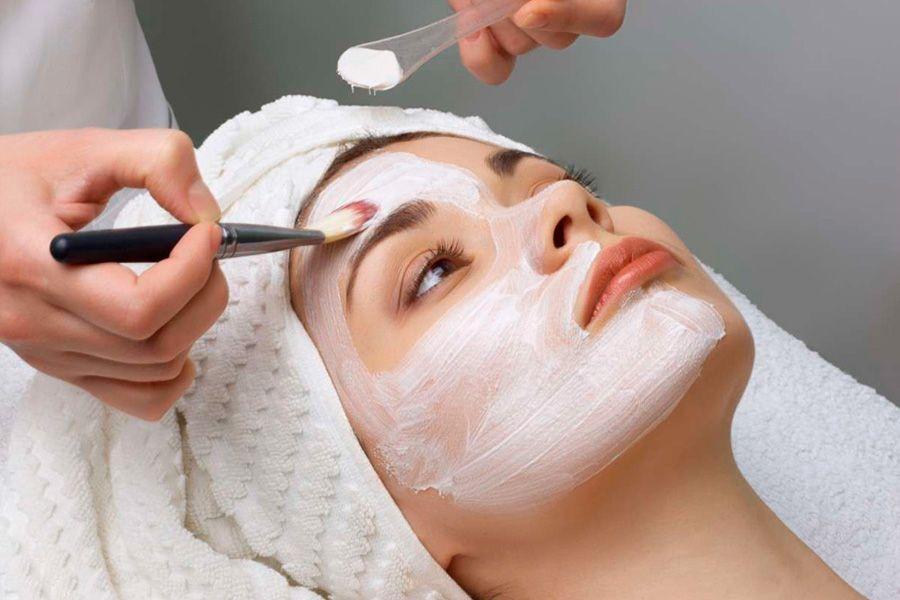The content of the article
Before deciding on chemical peeling, of course, it is not superfluous to find out everything about this procedure: for example, do you really need acid peeling, if so, why. Where is it better to conduct it and how much does the procedure cost, what should be done before and after peeling, how and what is it done, does it hurt, after what time it will be possible to appear to people. And of course, try to find out real reviews of people who have undergone this procedure.
The task of each peeling is to remove dead cells from the surface of the skin that interfere with its regeneration. Mechanical and hardware methods that stimulate the renewal of the upper layer of the epidermis do an excellent job of this work. But chemical peeling has more features. The substances that make up the peeling products are able to penetrate the skin and act not only in its upper, but also in the deep layers.
Features of chemical peeling
In fact, such a procedure is a deliberate trauma to the skin in order to cause its accelerated regeneration and multiple reproduction of new cells. The dermis is injured with acid, depending on the name of which they name methods, for example, glycolic, almond, retinol peeling. Each of them has characteristic features and, in addition to the general stimulating action, is able to solve certain problems. For example, peeling with retinolic acid is most effective for hyperpigmentation of the skin. And glycolic - to eliminate the network of fine wrinkles.
Combine all types of chemical peeling with the following features.
- Soreness of the procedureas evidenced by reviews of chemical peeling face. But since the duration of acid exposure on the skin is small (usually 10-20 minutes), most who have tried the method do not regret their decision.
- The need to perform under the supervision of a physician. It is the specialist who should recommend the type of peeling composition, the time of its exposure, based on the characteristics of the problem being solved. Therefore, chemical facial peeling at home is undesirable. In addition, independence in this matter can be simply dangerous because of the risk of getting a tissue burn.
- Recovery period - from 2 to 14 days, depending on the type of procedure. At this time, the skin may be covered with red spots, peeling is often observed, which indicates the renewal of the structure of the dermis, crusts may appear on the surface.
- Seasonality - the procedure removes the upper protective layer from the skin, which makes it especially vulnerable to sunlight. Such insecurity may cause age spots. To prevent this, it is advisable to plan a peeling for the autumn-winter period. And after him use sunscreen.
- Effectiveness during the course of chemical face peeling. Photos of women in the second week after the procedure make their friends enviously sigh. But the effect will be short-term - no more than 2-3 weeks, if peeling is done once. A stable result usually requires 4 to 10 treatments. Therefore, to the question of how often chemical peeling of the face can be done, experts answer: 1-2 times a year, but with a course.

Types of Chemical Peeling
Depending on the intensity of exposure to the skin, there are 3 types of peeling.
- Surface. Least traumatic, works in the upper layer of the skin. Performed with fruit acids. Recommended at the age of 30 years to solve the problems of excessive oily skin, enlarged pores, acne, the presence of "craters" after acne. Improves complexion, makes it even, refreshes the skin and gives it elasticity. Reviews about surface chemical peeling of the face indicate its ability to eliminate fine facial wrinkles and stop the aging of the epidermis.
- Median. It is aimed at the regeneration of the middle layer of the skin, performed using salicylic or trichloroacetic acid. Painful chemical peeling, reviews at the same time testify to its effective solution to the problems of medium-depth wrinkles, pronounced pigment spots, scars and scars. Healing comes quickly, skin rejuvenation is provided for 10-15 years.
- Deep. Aggressive, highly traumatic peeling, practiced only in a hospital setting of a medical institution. It is performed using phenolic acid, which can penetrate into the deeper layers of the skin. It is able to correct deep wrinkles, eliminate scar tissue, get rid of age spots and excessive thickening of the skin.
When can I do chemical peeling?
Turning to the procedure, it should be remembered that every chemical peeling is a skin burn. Therefore, you can not practice it at home. And it is worth leaving the cosmetology office as soon as possible, in which they will not tell you about the risk of the procedure and will not recommend an allergy test on the components of the composition.
Also, the presence of contraindications for chemical peeling of the face should be taken into account.
- Individual allergy. If there is even the slightest suspicion of an allergy, you should abandon the "experiment." Its presence can be checked by applying a small amount of funds to the elbow. Fast intense redness will warn you of danger.
- Pregnancy and lactation. It is undesirable to practice even superficial peels at this time, since there is a high risk of complications of the skin condition and negative emotions, which are absolutely useless to the expectant mother.
- The presence of viral diseases in the acute phase (acute respiratory infections, herpes, etc.)
- The presence on the skin of the face of injured areas (scratches, irritation, wounds).
In addition to general contraindications, there are other limitations to each procedure. Therefore, before contacting chemical peeling, you should visit the consultation of an experienced cosmetologist.
Video: chemical face peeling

